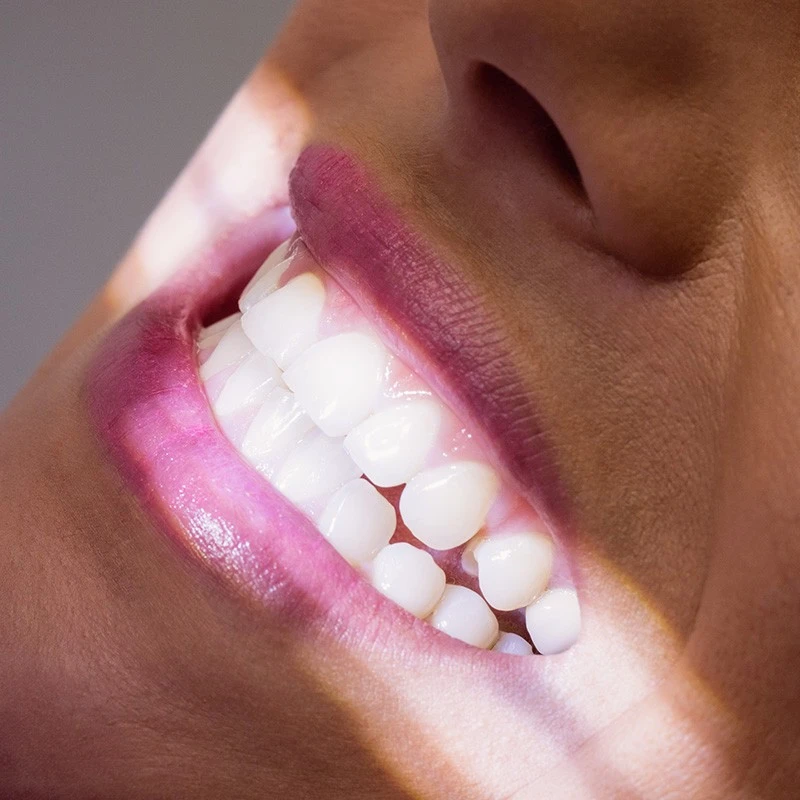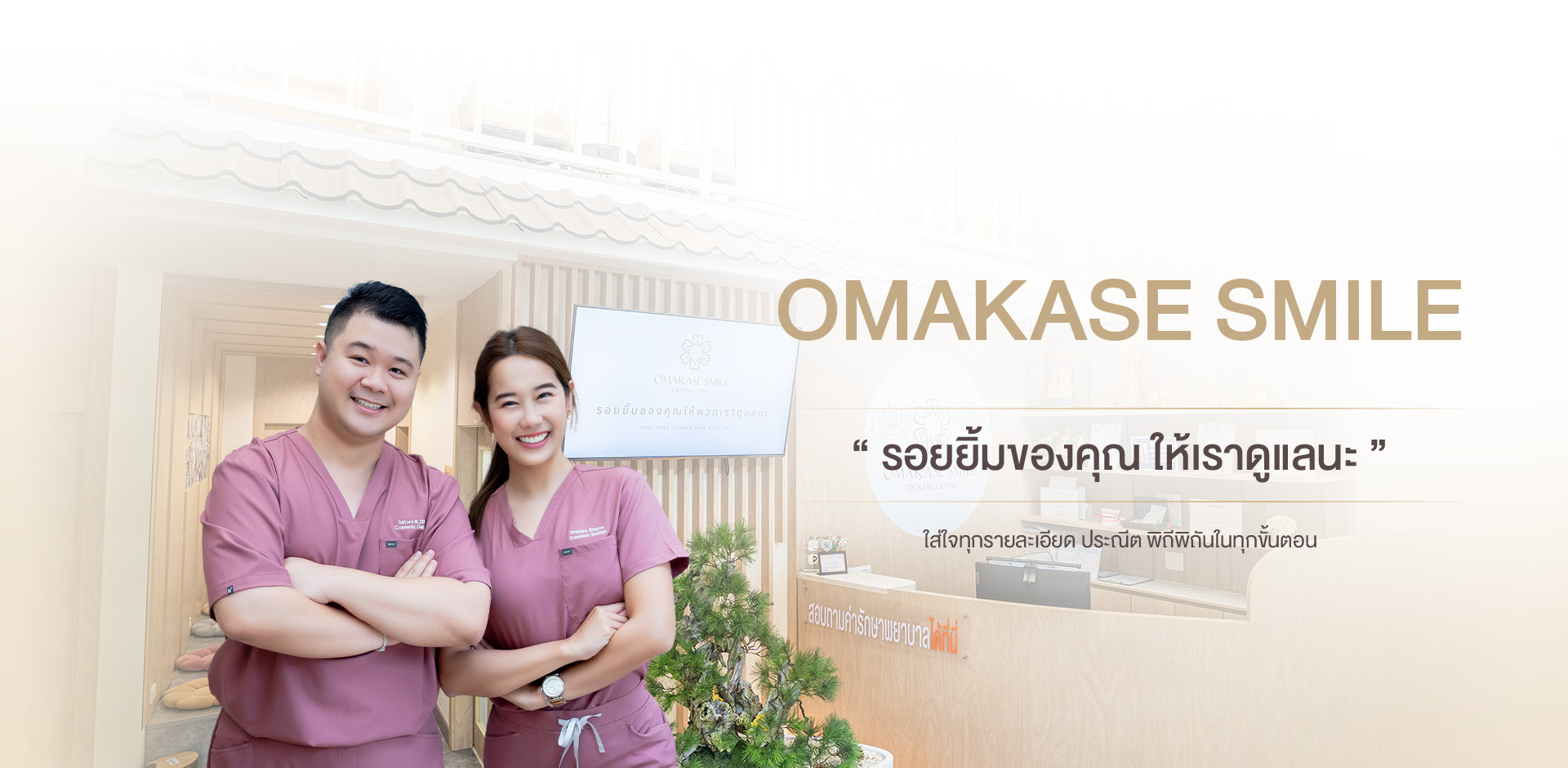
Gingivectomy
or gum or plastic surgery It is gum surgery, or changing the shape of the gums. To lift the gums and make the teeth look longer It is also done to treat certain conditions, such as gingivitis. or deep gum pockets that cannot be treated with antibiotics or root planing as well. Most of the time, gum cutting is done with crowns or veneers. root canal treatment and wisdom tooth surgery or extraction So that the gums look in proper proportion and will be even more beautiful when you smile.
Reasons for having gum surgery
The reason for having the gums trimmed is mainly for treatment in conjunction with other dental procedures, such as cutting the gums after orthodontic treatment. Root canal treatment, dental crowns, solving problems of excessive gums, swollen gums, tooth fillings, and unequal levels of the gum margins of each tooth. and the gums grow too much to cover the teeth. As a result, eating is uncomfortable. Some people get chest-shaped lips when their lips become thinner. When they smile, more gums may be visible. If additional gums are cut, it will help make the teeth look longer. When you smile, you won't see too much of your gums.
How many methods are there for cutting the gums?
Currently, gum trimming can be done in two ways: cutting the gum edge with a knife and cutting the gums with a laser. or an electric gum cutter. Both methods have different processes, as follows:
1. Cutting the gum edge with a knife
Cutting the gum line with a knife is a surgical method for trimming the gums that has been used for a long time, using a knife (blade) to cut the gums. The doctor will use a knife to trim the excess gum along the designed groove. Once the surgery is complete, the wound must be stitched and closed. Then another appointment will be made to have the stitches removed.
During this time, the patient must take good care of cleanliness. Because the wound may become infected. and must see the doctor regularly. However, cutting the gum edge with a knife has many limitations, such as more blood, taking time to recover, and having wounds that may be at risk of infection. The important thing is that the doctor must have expertise. Therefore, this method is less popular.
2. Laser gum cutting and electric gum cutting machines
Compared to cutting the gums with a knife, Laser gum cutting or cutting the gums with an electric gum cutter would be more popular. Because there are advantages Less pain, no need for stitches, a small wound, and less bleeding. and has fewer complications and better efficacy (minimal invasiveness).
The doctor will trim the gums with a tool specifically for cutting the gum edge. It doesn't take long. Each tooth only takes about 2–4 minutes to do and can stop the bleeding while being cut. Don't worry about the pain. There is no need to recuperate, therefore it is a popular method.
Gum trimming Things that most people like to do are divided into two types:
- Ordinary gum cutting Gingivectomy involves the dentist using tools to remove excess gum. To smooth out the gum line Suitable for people who don't have many problems but just have a lot of gums. and there is too much gum growing to cover the teeth. When smiling, the gums are visible more than the average person. It can make you feel insecure. However, this method may cause the cut gums to return to the level of the original gum edge before the cut (relapse).
- Aesthetic crown lengthening is the cutting of the gums together with the grinding of some of the bone edge beneath the gums. Therefore, it is suitable for people who have problems with convex teeth. and had thick gums that covered the teeth. The dentist will perform surgery on the gum edge along with grinding to reduce the height of the bone edge at the gum base. This will provide permanent treatment results, and the gums will not grow back. This method helps increase confidence and maintain good condition after treatment.
Advantages-disadvantages Gum trimming
- It helps increase confidence in your smile and enhance your personality.
- For treatment that is beneficial in the next steps, such as making veneers look dimensional, and the most beautiful
- Restorations such as crowns or fillings to cover decayed and broken teeth under the gum line. For the efficiency of the crown, the filled teeth can be used for a longer time.
- Gives permanent results. Gums will not grow back again. This depends on the health of the patient's teeth and gums as well.
- It doesn't take long to heal, averaging approximately 1-2 minutes per tooth if treated with a laser gum-cutting machine. There will be no recovery time and fewer complications.
- If you smile and see a lot of raised bones above your upper lip, after trimming the gums, the lips will look less plump.
Disadvantages of gum grafting
Must have surgery using anesthesia. In the event of an allergic reaction to anesthetics, you must be under close medical supervision.
After cutting the gums If the patient does not take care of their oral health, it can lead to periodontal diseases such as gingivitis, receding gums, tooth decay, and tooth decay.
Has a relatively high price
Preparation before cutting the gums
- Teeth should be thoroughly examined. If there is tartar, it should be scraped off before treatment for 2 weeks with minimal gingivitis.
- X-rays were taken to assess bone levels.
- If you have a congenital disease or have medicines that you take regularly, including smoking, you should consult your doctor before starting treatment.
- Consult your doctor about an appropriate treatment plan, such as how many gums need to be removed. Or do I need to have my gums cut and the teeth rebonded?
Procedure for cutting gums
- First, the doctor will inject an anesthetic. Wait 20–40 minutes for the anesthetic to take effect, and mark the spot on your gums before surgery.
- When the anesthetic takes effect, the doctor will cut the gums using a machine. electrocautery It is an electric gum cutter. To cut off the excess gum.
- In the case that the patient also has problems with convex teeth, the doctor will grind and decorate the tooth bones to create balance.
- After completing treatment, the doctor will recommend basic cleanliness. and make an appointment to follow up after the procedure.
How to care after gum surgery
- To care for the wound, use a button bud moistened with water and gently clean the wound area.
- If there is pain, you can take painkillers to relieve the symptoms.
- Refrain from activities that may have side effects on your teeth, such as teeth grinding, boxing, and chewing hard food.
- In the beginning, you may not be able to brush your teeth in the surgical area. But you can use dental floss in other areas as usual. And you can use disinfectant to spit and clean.
- Take the disinfectant prescribed by the doctor continuously until it is finished.
In the beginning, you should eat soft food. To reduce irritation Including food that has a cold temperature Will help increase coolness, such as
- Boiled rice or porridge with a mild flavor
- Juice or milk
- You should drink water regularly, normally 1.5–2 liters per day.
- Vegetables and fruits that are high in vitamin C, such as berries, kiwi, and pineapple, as well as vitamin A, such as various green leafy vegetables or vegetables such as carrots, pumpkin, etc. Because these foods will help restore wounds and heal them more quickly.
- For foods that are high in protein, such as chicken, fish, egg whites, and cereals, it is recommended that you increase protein at least twice as much as normal so that the body can build tissue. Resulting in wounds healing faster.
If you have your gums cut, what should you not eat?
In the beginning, you should avoid solid food and food that is too spicy or hot because it can irritate the wound, for example.
- Foods that are spicy, such as papaya salad, salads, etc., because they may stimulate the wound to become inflamed.
- Refrain from chewing ice, nuts, or hard food. Crunchy foods that affect teeth
- Smoking and drinking alcohol should be avoided.
- Avoid fermented foods such as pickled bamboo shoots and pickled fruits because foods that are pickled often contain contaminants that may stimulate inflammation.
How many days does it take to heal after cutting your gums?
It takes approximately 2–4 weeks, depending on the cleanliness of the patient's gums. If the wound is well taken care of and the gums are the gums are clean, recovery will return. (reduces microbial plaque that will cause gingivitis) Generally, after the 4th week, if the gum condition is healthy, veneers or crowns can be restored immediately.

